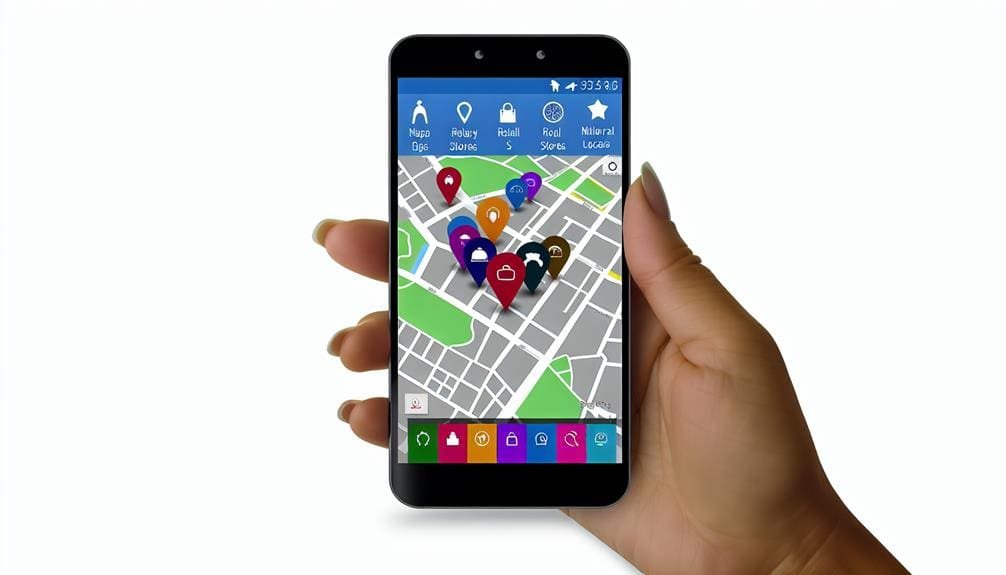Optimize Mobile UX for Better Local SEO Results
January 17, 2024 | by Jacob Cavazos

Just as the ancient mariners needed stars to navigate the seas, today's businesses require a well-optimized mobile user experience (UX) to guide local customers through the digital landscape. We've seen firsthand that over 60% of searches now come from mobile devices, and a poor mobile UX can significantly deter potential customers. It's become clear that a mobile-friendly website not only pleases Google's ranking algorithms but also caters to the expectations of a local audience seeking immediate and relevant results. To stay ahead, we must assess and enhance our mobile UX, focusing on aspects such as responsiveness, load times, and local keyword integration. By doing so, we'll not only meet the standards of modern search engines but also provide a seamless and intuitive experience that local users demand. As we embark on this journey, it's essential to consider the specific steps that will lead us to a place where our local SEO efforts are not just noticed, but rewarded.
Assess Mobile Responsiveness
To ensure a seamless user experience across all devices, it's crucial to assess and enhance the mobile responsiveness of your website. We start by utilizing Google's Mobile-Friendly Test tool, which provides detailed insights into how well our site performs on mobile devices. This step is essential for effective mobile SEO, as mobile users dominate the internet and their experience directly influences our website's search engine rankings.
We're committed to using responsive design, ensuring that our website's content dynamically adjusts to various screen sizes. This adaptability is no longer a luxury but a necessity, considering the diverse array of devices in use today. Optimizing for mobile isn't just about scaling down; it's about rethinking navigation to be intuitively accessible, with menus and buttons that are easy for mobile users to interact with.
To keep load times swift, we optimize images and content formats specifically for mobile. This not only improves mobile optimization but also ensures users have a positive experience, boosting our site's engagement metrics. An optimized website for mobile is the foundation of our mobile search engine optimization strategy, ensuring that we meet and exceed the expectations of our mobile audience.
Enhance Page Load Speed

Building on our commitment to a mobile-optimized website, we're now focusing on enhancing page load speed, which is critical for maintaining user engagement and improving our search engine rankings. Here's how we're tackling this challenge:
- Utilize Google PageSpeed Insights
- *Diagnose Performance Issues*: Pinpoint what's hindering our site's load time.
- *Follow Recommendations*: Implement changes to improve your site's load.
- *Monitor Ongoing Performance*: Keep track of enhancements to sustain optimal speed.
- Optimize Images and Content
- *Compress Images*: Reduce file size without sacrificing quality.
- *Choose Correct Formats*: Use formats like WebP for better efficiency.
- *Minify Code*: Streamline HTML, CSS, and JavaScript for quicker processing.
- Leverage Advanced Techniques
- *Responsive Design*: Ensure the mobile version adapts seamlessly to different devices.
- *Lazy Loading*: Load only the content necessary as users scroll.
- *Caching Strategies*: Store elements locally to speed up subsequent load times.
Implement Local Keywords

How can we ensure our online presence resonates with the local community? By researching and integrating location-specific keywords into our website's content and metadata, we're poised to improve our local SEO results significantly. To find local keywords that will bolster our local SEO rankings, we utilize tools such as Google Keyword Planner and SEMrush. They provide valuable insights into the search terms local customers are using, especially those using mobile devices.
When we focus on local searches, particularly searches conducted on mobile, we're targeting an audience that's ready to act. Using local keywords in our digital assets is critical because most local searches are performed on mobile devices. We integrate these localized keywords strategically across various elements of our site.
Here's a quick reference table to guide our keyword implementation strategy:
| Implementation Area | Keyword Focus |
|---|---|
| Page Headings | Localized Keywords |
| Body Text | Long-Tail Keywords with Location Modifiers |
| Meta Tags | Location-Specific Keywords |
We continuously monitor the effectiveness of our keyword choices and adjust our strategy to align with current local search trends. This data-driven approach ensures that we stay relevant to local businesses and their potential customers.
Encourage Customer Reviews

Having established a foundation with strategic local keyword implementation, we must now focus on amplifying our online reputation through encouraging customer reviews on platforms such as Google My Business and Yelp.
- Google Business Profile
- *Customers to Leave Reviews*: Prompt users post-purchase via email or SMS, making it easy with direct links to our profile.
- *Business Information*: Ensure that our Google Business Profile is accurate and complete, enhancing trust and credibility.
- *Respond to Reviews*: Regularly engage with customer feedback to demonstrate our commitment to their satisfaction.
- Online Presence
- *Reviews and Ratings*: Monitor and showcase testimonials across all platforms to boost our online presence and influence potential customers.
- *Search Engines Verify*: Recognize that search engines use reviews as signals for trustworthiness and relevance in local search results.
- User Experience and Search
- *Positive Experience*: Facilitate an excellent user experience, increasing the likelihood of positive reviews.
- *Structured Data Markup*: Implement Structured Data Markup to highlight reviews and ratings, aiding search engines in delivering rich results.
Optimize for Voice Search

To stay ahead in the swiftly evolving digital landscape, we must optimize our content for voice search, considering its growing prevalence on mobile devices. Voice search is transforming the way users interact with search engines, particularly when searching for local businesses or products. Searches conducted on mobile devices often use conversational language, prompting us to adapt our SEO strategies for this trend.
We're focusing on integrating long-tail keywords that mirror natural speech patterns into our content, ensuring we're capturing the essence of voice search queries. This approach not only aligns with how people are searching for local information but also improves our overall user experience. By optimizing our online presence for direct and concise answers, we're better positioned to be featured in those coveted snippet spots that voice search results commonly pull from.
It's essential to remember that voice searches are typically more conversational. We're tailoring our content to match this, answering the implicit questions users might have. By doing so, we're not just improving our local search presence; we're also creating a more intuitive and responsive user experience for those who rely on their mobile devices to find what they need quickly and efficiently.
Frequently Asked Questions
Does Mobile Optimization Help Seo?
Yes, mobile optimization significantly boosts SEO by aligning with user intent, improving page speed, and ensuring responsive design. It also reduces bounce rates and enhances mobile indexing, local content, and voice search functionality.
How Do I Optimize a Local Seo?
To optimize local SEO, we're ensuring NAP accuracy in local listings, maintaining citation consistency, managing reviews, and leveraging Google My Business. We're targeting keywords, optimizing for voice search, localizing content, integrating maps, and monitoring social signals.
Which Is a Best Practice for Mobile Seo?
We're implementing responsive design, enhancing page speed, and sizing touch elements ideally to meet mobile SEO best practices. Emphasizing mobile keywords, user intent, and ensuring content readability are key for our strategy's success.
What Are the Unique Considerations for Mobile Seo?
We must consider responsive design, touch elements spacing, and page speed for mobile SEO. Mobile keywords, user intent, and voice search optimization, alongside accurate local listings, engaging content, click-to-call features, and AMP, are essential.
RELATED POSTS
View all



